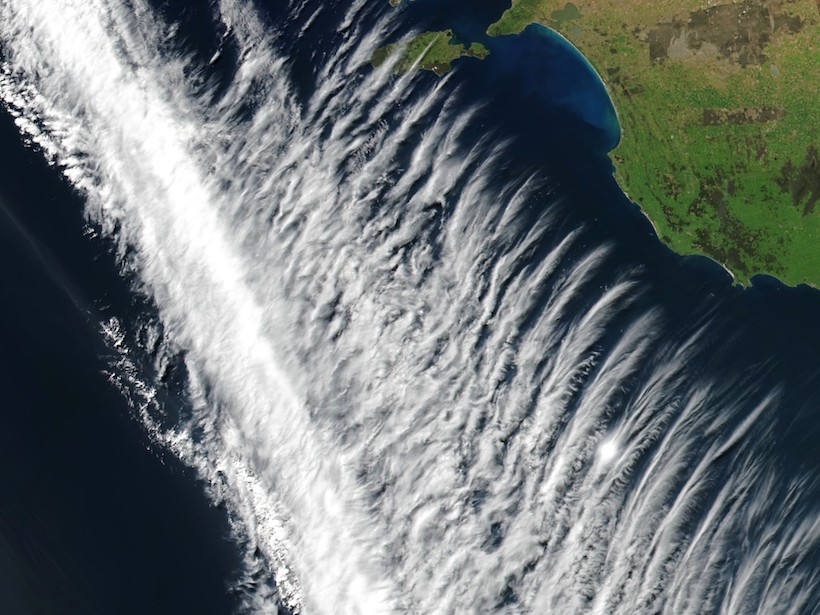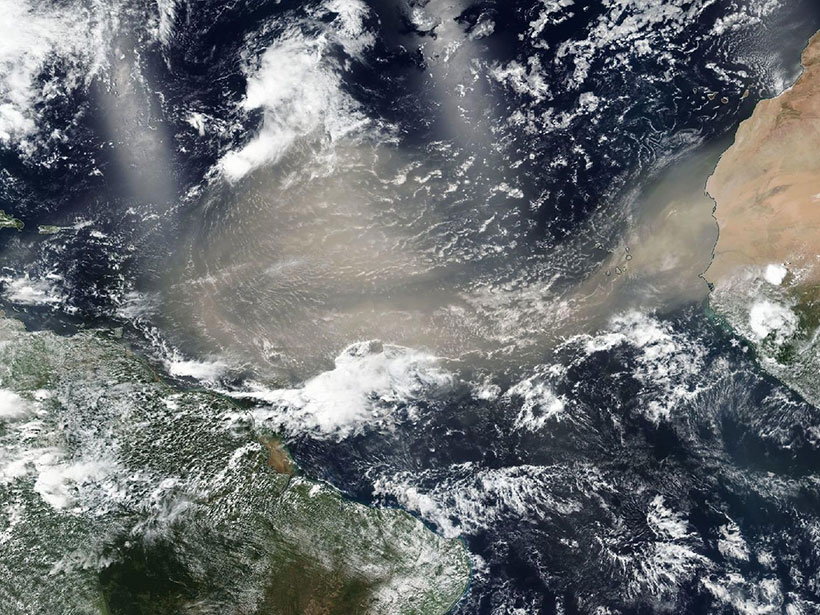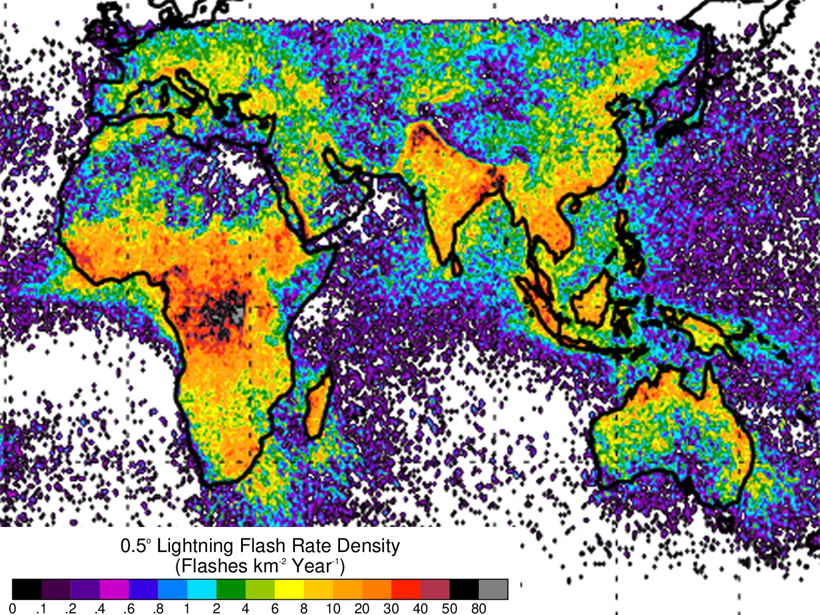Si están presentes, los microbios podrían explicar patrones de evolución en la atmósfera planetaria de Venus, al observarse con luz ultravioleta.
everything atmospheric
Successfully Simulating Atmospheric Gravity Waves
These waves are key to moving energy from the troposphere to the thermosphere, but until now they haven’t been well described at high altitudes in computer models.
Podcast: The Unusual Relationship Between Climate and Pandemics
Two recent studies show how climate affects human pandemics and how pandemics, in turn, alter the environment.
Tropical Cyclones Suppress Rainfall in Their Wakes
Passing storms dredge up colder ocean water, curbing evaporation and decreasing cloud coverage and rainfall for weeks, satellite data reveal.
Decrease in Lightning Recorded over the Lower 48
Researchers mining data from the National Lightning Detection Network found a 32% decrease in lightning counts in May and June 2020 compared with previous years.
Trans-Atlantic Dusts May Not Enrich Amazon as Much as Thought
New research indicates that nutrient loads delivered to South American ecosystems by dust originating in Africa are far lower than suggested in previous studies.
Galfi Receives 2019 Donald L. Turcotte Award
Vera Melinda Galfi received the 2019 Donald L. Turcotte Award at AGU’s Fall Meeting 2019, held 9–13 December in San Francisco, Calif. The award is given annually to a recent Ph.D. recipient for “outstanding dissertation research that contributes directly to nonlinear geophysics.”
Ice from Above: Toward a Better Understanding of Hailstorms
Globally relevant and locally devastating, hailstorms produce significant societal impacts; despite this, our understanding of hailstorms and our ability to predict them is still limited.
A New Look at Global Lightning from the Space Station
The Lightning Imaging Sensor on the International Space Station provides an expanded view of global lightning that improves scientific understanding of the Earth as well as public safety.
A New Dataset of Temperature and Precipitation Extremes
HadEX3 is an updated dataset of gridded temperature and precipitation extremes, that covers the period of 1901 to 2018 and has improved spatio-temporal coverage.









